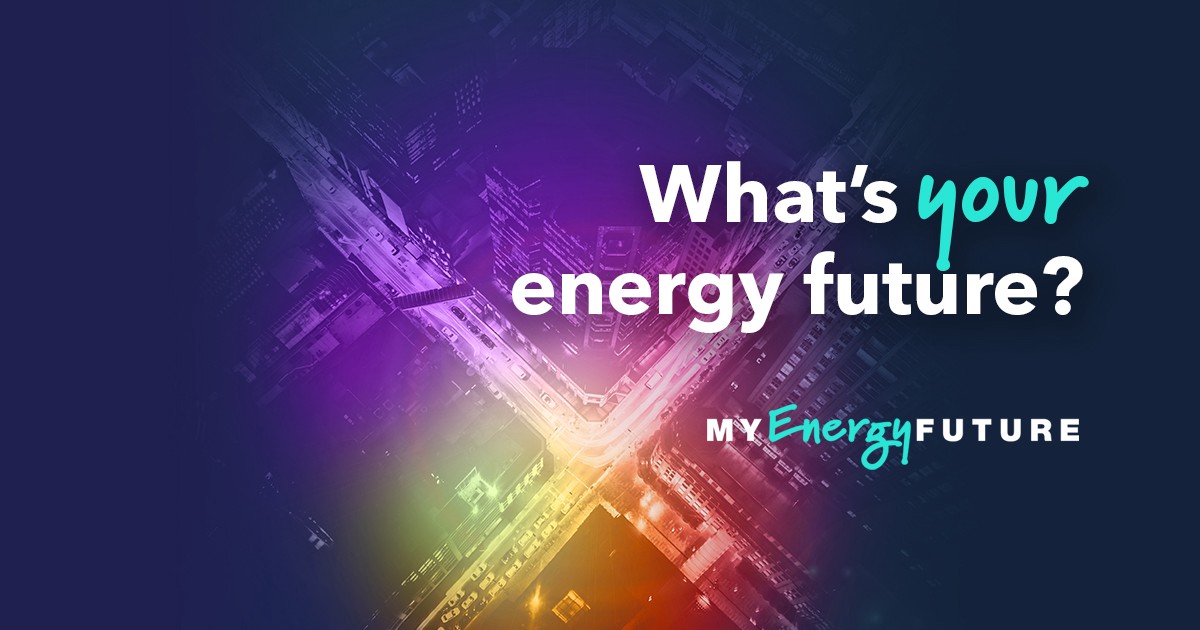
The outbreak of COVID-19 has triggered a global economic crisis that was unimaginable even two weeks ago, and perhaps nowhere is that being felt more acutely than in Alberta. In addition to the obvious consequences of social distancing on businesses and industry, we’re also dealing with a gut-wrenching collapse in oil prices that’s being driven in part by a deepening conflict between Saudi Arabia and Russia. Taken together, the combination of falling oil prices and a temporary collapse in the broader economy will put Alberta’s community and business leaders to the toughest test they’ve ever faced — one that they cannot afford to fail.
But there’s an old saying that breakdowns can create breakthroughs, and there are some very important ones that could happen in Alberta if the right decisions are made in this crisis. Investments today can help enable structural changes that unlock longer term opportunities that will be key to future prosperity. Yes, the oil and gas industry needs support to weather the storm that it’s been hit with. At the same time, efforts by the federal and provincial government can’t just focus on sustaining what Alberta already has. They should also be directed towards areas where it can build new industries and opportunities, along with the jobs and investment they could sustain.
The most strategic investments of all will leverage Alberta’s legacy assets and resources to enable the economy of the future. Thankfully, a growing network of innovators and partner organizations have been collaborating for years through the Energy Futures Lab to develop a shared sense of the big opportunity areas in an energy system and economy that are fit for the future. Here are five key areas where governments looking to offer help today should be directing their attention.
Hydrogen
The hydrogen economy has been slow to take off around the world, and its promise has been touted for some time now. But its role in a low-carbon economy is becoming more clear with each passing day, and Alberta is well-positioned to capitalize on that by leveraging its many resources and capabilities. By combining its massive deposits of natural gas with carbon-capture technology, Alberta could be a leader in the production and export of so-called “Blue Hydrogen” — a fuel source that combines high energy intensity with low emissions.
Better yet, it can be produced in Alberta at half the wholesale cost of diesel. As the University of Calgary’s David Layzell and Jessica Hof noted in a recent op-ed for the Edmonton Journal, the economic possibilities here are tantalizing. “If the province produced and exported hydrogen as a transportation fuel,” they wrote, “instead of selling an equivalent amount of crude oil and natural gas to the U.S. at discount prices, the Alberta economy could generate three to 10 times more economic activity.”
And as they noted in a recent report for CESAR (Canadian Energy Systems Analysis Research) and the Transition Accelerator, Alberta enjoys cost advantages over most other potential producers of hydrogen.
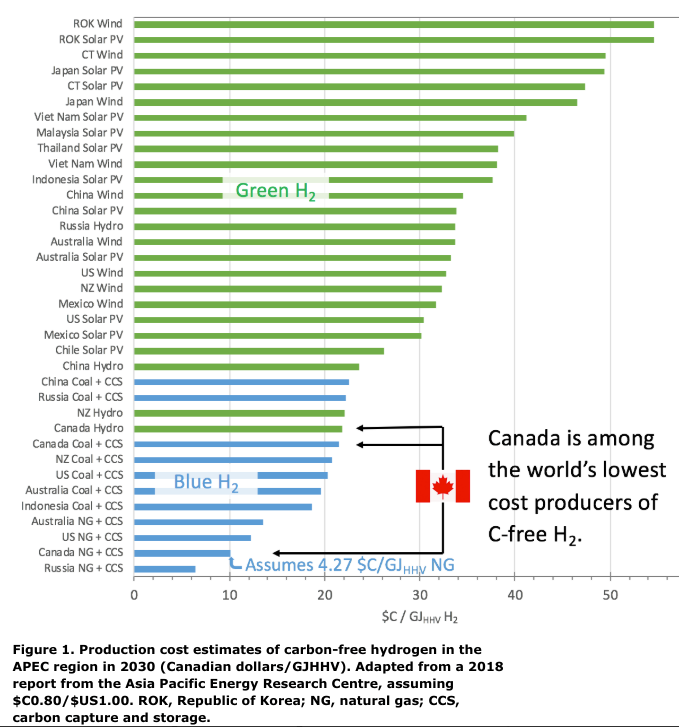
Image courtesy of CESAR/The Transition Accelerator
Yes, the market for the hydrogen economy has been slow to take shape, but that’s beginning to change. There were more than 50 strategies and targets put in place last year, from Germany to South Korea, to enable the development of hydrogen-based systems. The 2020 Tokyo Olympics will not take place until 2021, but one thing we know for sure is that the Olympic flame will be powered by hydrogen for the first time in history. Hydrogen will also power the 6,000-unit Olympic Village, as well as the buses and cars that will move athletes between venues.
According to Sam French, an editorial advisory board member with H2 View, “[The] Tokyo Olympics will provide the platform for hydrogen to pole vault into the mainstream. We’re on the cusp of a major energy transition. 2020 could very well be the year to shift public perception and unleash the global hydrogen market.”
While electric vehicles are all the rage right now in many circles, hydrogen-powered ones are ready to make their move. The Toyota Mirai, which has been in production since 2014 and was recently revamped with a 30% larger driving range, is part of the Japanese automaker’s push to grow the market for fuel-cell vehicles. Then there’s the Nikola Motor Company, an American firm whose Badger is being touted as the most advanced zero emissions FCEV/BEV pick-up truck in the world. With 980 ft. lbs of torque, 906 peak horsepower, and 455 continuous horsepower, it won’t lack for muscle.
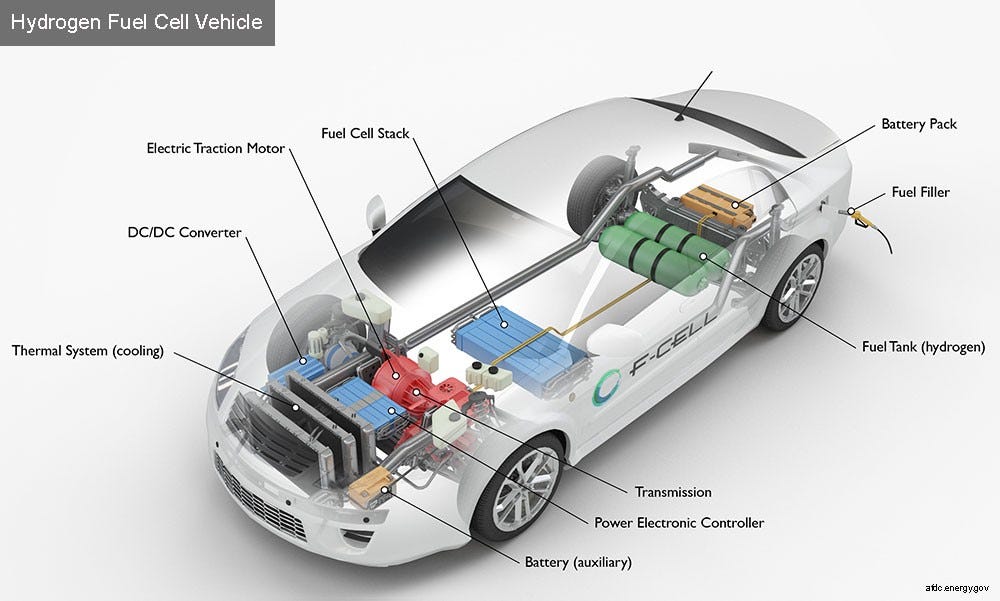
Image courtesy of the U.S. Department of Energy
But where hydrogen really shines is in the heavy transport space, which accounts for a large and growing proportion of our overall emissions.
As Layzell and Hof noted in their Edmonton Journal op-ed, in Alberta alone freight transportation accounts for 12 million tonnes of GHGs every year, along with 70 percent of diesel fuel demand. Replacing that with hydrogen would drive huge emissions reductions in the near term and even bigger economic opportunities down the proverbial road.
That’s why it’s time for the federal and provincial governments to put their full weight behind ideas that increase the use of hydrogen in the heavy transport space. That includes everything from injecting hydrogen into existing diesel engine transport trucks, which would support the build out of the infrastructure that’s needed for a wider network of hydrogen fueling stations, to the Alberta Zero-Emissions Truck Electrification Collaboration Project, a $15 million, three-year joint venture between Emissions Reduction Alberta and the private sector. Hydrogen’s moment is upon us, and Alberta can play a major role in that — and benefit accordingly.
Geothermal Energy
Geothermal offers some of the lowest-hanging economic fruit available right now, given Alberta’s demonstrated capacity for drilling and developing sources of energy and its rich inventory of potential geothermal sites (which includes old oil and gas wells). If Alberta companies like Terrapin Geothermics and Borealis Geopower were empowered to build out 300 megawatts worth of geothermal electricity, along with an array of geothermally-heated district energy networks, it could spark a $3.6 billion economic boom — one that would employ welders, bit suppliers, construction workers, drilling crews, pumping equipment suppliers, and a host of other people and small businesses.
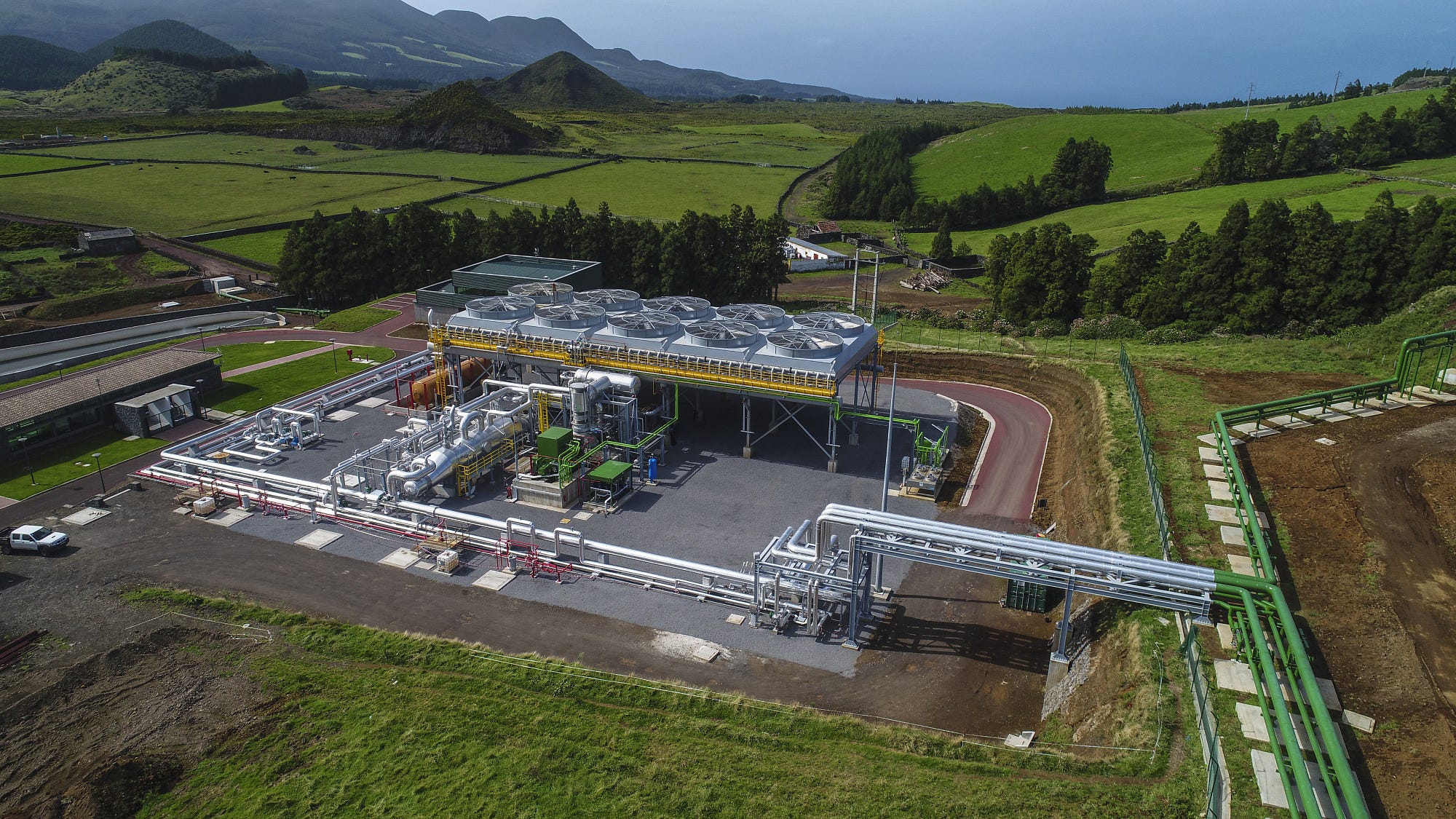
The Pico Alto Geothermal Power Plant on the Island of Terceira in the Azores. Image courtesy of Terrapin Geothermics
By drilling 186 new wells, it would support over $900 million in new drilling activity alone — a vital contribution to a sector that is being waylaid by collapsing oil prices and the resulting decline in the number of wells being drilled. And because geothermal wells are often larger and more complex than ones looking for hydrocarbons, they tend to last up to four times longer than conventional oil and gas drilling operations. Here, that would mean 7,500 total drilling days and 750 direct jobs, along with 5,625 indirect and induced drilling-related jobs.
That’s not all. By unlocking 138 million gigajoules of low-carbon baseload heat, it could support district heating systems and meet industrial demand in a way that’s good for the environment and the economy. The creation of new district heating systems could support 10,000 jobs during the construction phase and 300 for their operation, along with 6,600 indirect jobs, and create an asset that industries like pulp and paper and agriculture can put to good use.
Finally, if the 300 megawatts of waste thermal heat generated by the Alberta Industrial Heartland and Strathcona Industrial Area was captured, it could both reduce emissions and create value. At present, there’s approximately 7.5 million gigajoules of heat that’s vented into the atmosphere in those two places, a figure that represents $39 million in lost value. By building a 50 kilometre district heat network that connects these two areas, the province could activate $50 million in direct construction activity, support over 300 jobs, and create $92 million in total economic opportunity.

The team at Borealis GeoPower
Geothermal development is low-hanging fruit, and picking it will create jobs, reduce emissions, and support a sector of the economy that will otherwise suffer more with falling global oil prices.
Lithium
Another opportunity to leverage Alberta’s oil and gas assets to develop a new industry highly relevant for a low carbon emissions future is with lithium. This may strike some as ironic, given that lithium is a key component in the electric vehicles that some in the oil and gas industry see as a threat to their business. For those in the province’s burgeoning lithium sector, though, like e3 Metals and Summit Nanotech, EVs are a key driver of demand for their product — one that’s made right here in Alberta. And the more of those cars that get made, the more lithium will be needed to do it. Demand for lithium is expected to start outstripping supply as soon as 2025.
Most of that supply currently comes from Australia, South America, and China, where it’s produced using environmentally dubious techniques like hard-rock mining or evaporation ponds. Here in Alberta, on the other hand, it’s already being produced as a byproduct in oil and gas drilling, especially in the brine that comes out of wells in the Leduc Reservoir region. All that’s needed is a willingness to extract the lithium and refine it — a process that would require the same kind of government support that helped lay the foundations for the oil sands industry a generation ago.

Image courtesy of e3 Metals Corp
Doing that could create hundreds of full-time jobs in the near term, and many more as the industry reduces its operating costs and starts to scale up. Eventually, Alberta could even play host to battery manufacturing plants, and the plethora of high-paying jobs and spin off economic opportunities that would create. Most importantly, it would give the province a valuable hedge against the possibility that electric vehicles really do take off in popularity, and put a dent in global demand for oil in the process.
Bitumen Beyond Combustion
It’s no secret that Alberta is sitting on hundreds of billions of barrels of bitumen, the thick and heavy deposits that have been getting steamed and mined out of the earth for decades. But the fact that we could be doing something other than putting that bitumen into barrels and sending it off to refineries? That very much remains a secret to many people, even right here in Alberta.
To its credit, the Government of Alberta has been trying to change that. Through the “Bitumen Beyond Combustion” program that’s been championed by Alberta Innovates, it has invested in research that studies other economic opportunities and applications for bitumen. That research has already yielded some very interesting results, with potential uses ranging from asphalt and activated carbon to vanadium (for batteries) and carbon nanotubes. But the most exciting discovery is the possible applications in carbon fibre technology, something that is being supported by a $15 million Carbon Fibre Grand Challenge.
Carbon fibre is ten-times stronger than steel, and composite materials that use it are being tested in a wide range of potential applications, from automobiles and the aerospace industry to concrete, plastics, and wood products. And while demand for crude oil and products refined from it like gasoline and diesel may start to decline in the near future, it is going nowhere but up for things like cars, homes, buildings, roads, and consumer goods. Bitumen-derived asphaltenes have two key advantages: a significantly smaller environmental impact than energy products that are combusted, and a dramatically lower supply cost ($0.50/kg versus polyacrylonitrile at $7–14/kg) than other potential sources of carbon fibre.

Image courtesy of Corporate Knights
While a bitumen-based carbon fibre industry is at least five years away from commercial production at meaningful scale, direct and meaningful government funding could help speed that along. It could also help grow the market and position Alberta as a leader in it. That market could be very, very big, given that it aligns perfectly with the lower-carbon emissions economy that’s being built as we speak. It can make cars lighter, and give them better mileage. It can make bridges more durable, and ensure they need to be replaced every 200 years rather than every 50. And it can make consumer products like hockey sticks, bicycles, and prosthetics more affordable.
Best of all, it can do all of these things without creating significant downstream emissions — an obvious advantage over bitumen that gets combusted, where more than three-quarters of current emissions take place. Bitumen beyond combustion turns the carbon intensity of the oilsands from a liability into an asset. If the market reaches its potential, the value of every barrel in the ground in Alberta would increase by five to ten times — and a new industry could take root that might one day generate between $50 billion and $100 billion in annual revenue.
Artificial Intelligence
When it’s all said and done, artificial intelligence and machine learning may prove to be the most important economic developments of the 21st century. They are already transforming the way people work in an ever-expanding range of industries, from agriculture and oil and gas to tech and manufacturing, and their influence will only continue to grow. And much of that influence is coming right from our own backyard in Edmonton, where the University of Alberta and the Alberta Machine Intelligence Institute have long been leaders in this space. Their work, and their presence, helped attract Google’s Deep Mind to Edmonton, where it set up its first international research office in 2017.
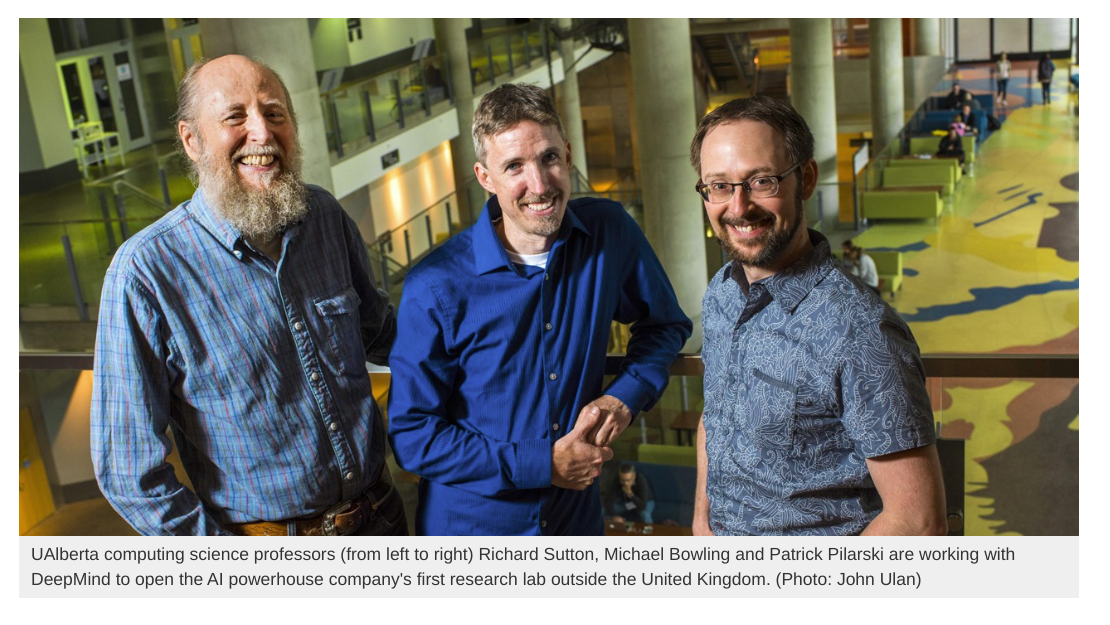
The power of AI is no secret to some of Alberta’s biggest companies, either. Suncor, for example, has made AI and machine learning a key part of its “Suncor 4.0” plan, which will see it partnering with Microsoft to bring new technologies to bear on its entire business. As Suncor’s Sandy Martin told the Financial Post, “If you think into the future — and wherever that future is — there isn’t an environment where any company survives without becoming digital.” Imperial Oil, meanwhile, recently announced a two-year agreement with the Alberta Machine Intelligence Institute that will see them work together to help the oil giant build out its in-house machine learning capabilities and apply them to a wide range of environmental and operational challenges.
But Alberta’s advantage in this space is starting to slip, as other cities and countries compete to attract AI talent and capital. Where the University of Alberta used to rank in the top five among post-secondary institutions in the world for AI in terms of the number of publications and academic citations, it has slipped to 13th over the last five years. While universities around the world are investing billions of dollars in new facilities and infrastructure — MIT alone is investing $1 billion to create a new college that combines AI, machine learning, and data science with other academic disciplines — the University of Alberta is starting to fall behind.
What’s needed is a renewed commitment by government to supporting the AI sector, both in words and deeds. That will mean reinstating the Scientific Research and Experimental Development Tax Credit and increasing, rather than decreasing, budgets for entities like Alberta Innovates and the University of Alberta. Most importantly, it will mean treating new forms of economic activity in the province as a genuine opportunity rather than competition for incumbent industries. AI researchers and innovators thrive on solving problems in other sectors and systems, and Alberta’s energy sector is both rich in data and ripe with challenges that need to be addressed as it looks to strengthen its cost and carbon competitiveness and stay relevant in a shifting energy landscape. Alberta should be fertile ground for AI innovation, and government can play an important role in making that happen.
Yes, It’s Time
Albertans understand what it means to chase a shared economic goal, and they’ve been very successful in doing that over the last few decades. Now, it’s time to chase a new one: a future in which the term energy encompasses a wider range of possibilities, where we use our past strengths on new opportunities, and where these new opportunities aren’t impeded by old blind spots. It’s a future defined by economies of support, where one opportunity begets and actually advances another. That’s why these aren’t five separate tracks but rather interconnected pathways of opportunity and possibility. And that’s why they deserve to be supported as we all try to put the pieces of our lives, our businesses, our province, and our country back together.
Alison Cretney is the Managing Director of the Energy Futures Lab
Chad Park is the Lead Animator for the Energy Futures Lab



